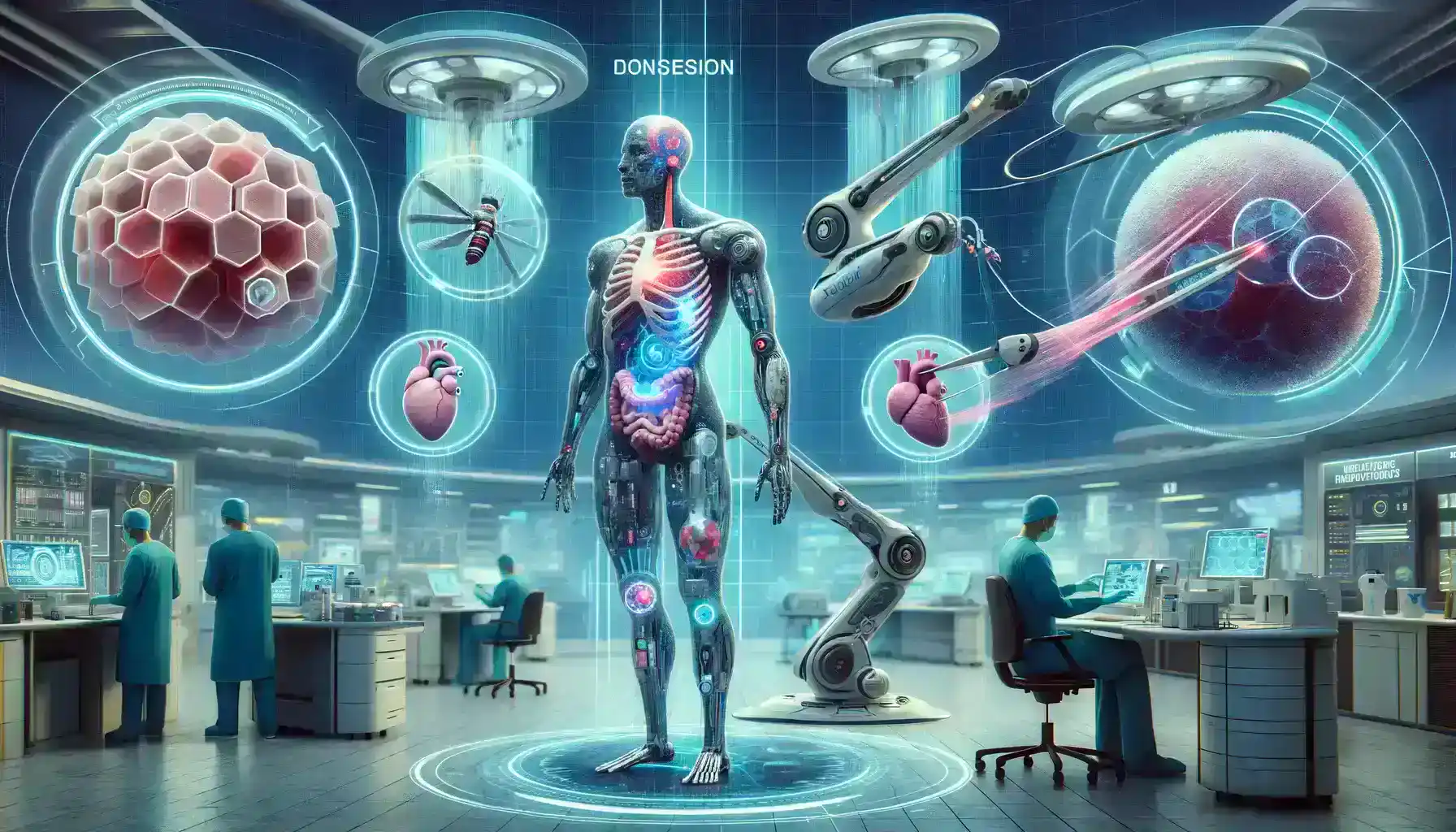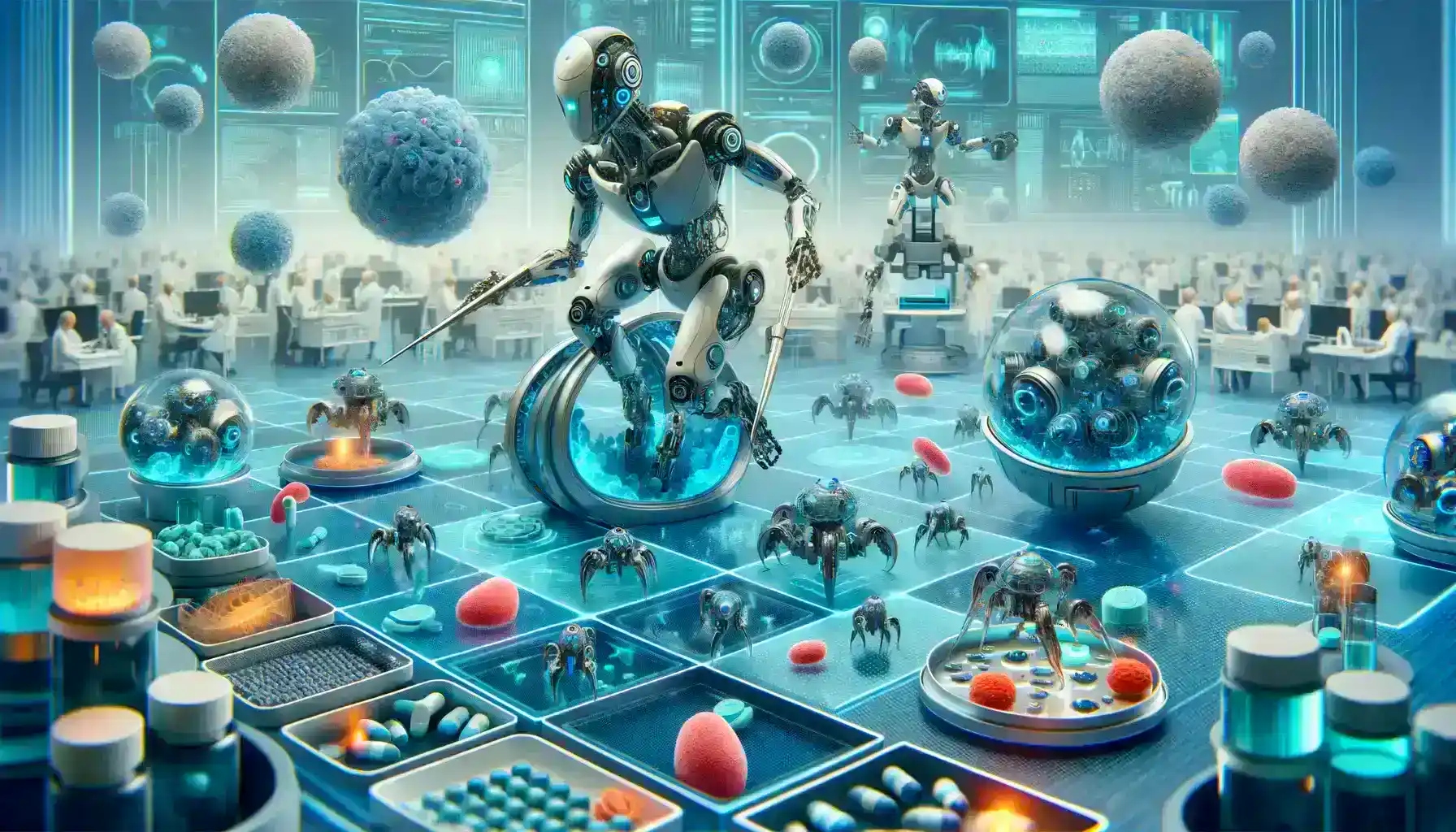Table of Contents
In the rapidly advancing realm of biotechnology, a groundbreaking synergy is taking shape, promising to redefine the landscape of medicine. With the convergence of biology and robotics, Xenobots, a novel class of bioengineered microbots, are emerging as powerful agents of transformation. These unique entities, often referred to as Xenobots functioning as Microbots, represent a cutting-edge fusion of biological and technological innovation.
Xenobots, derived from the Latin word “xenos” meaning “foreigner,” encapsulate their distinctive nature as living machines created from frog cells. Blurring the boundaries between biology and robotics, they signify a paradigm shift in the way we conceptualize medical interventions.
Xenobots as Microbots
Xenobots as Microbots represent a remarkable intersection of biology and robotics, where innovative science fiction meets real-world potential. Xenobots as Microbots are bioengineered creations, primarily constructed from frog cells. This novel approach merges the biological components of living organisms with the mechanical aspects of robotics.
How long do Zenobots Live?
- Xenobiotics are bioengineered organisms created from frog cells, and their lifespan may depend on various factors, including their environment, the specific cells used, and how they are maintained.
- Xenobots are designed for specific tasks or experiments and may not have a predetermined “natural” lifespan like living organisms. Instead, they are created and used as tools for various purposes in biotechnology, including medical applications, environmental cleanup, or research.
What do Xenobots eat?
- Xenobots are designed for specific tasks or experiments and may not have a predetermined “natural” lifespan like living organisms. Instead, they are created and used as tools for various purposes in biotechnology, including medical applications, environmental cleanup, or research.
- These microorganisms are designed for specific tasks or functions in various applications, such as medical procedures or environmental cleanup, and are not equipped with the ability to feed on external sources of nourishment.
- The energy required for their activities is derived from the initial energy stored in the cells during their creation, and they do not possess mechanisms for acquiring additional energy from their surroundings.
In this article, we embark on a journey to unveil the extraordinary potential of Xenobots as Microbots and to explore how they are poised to revolutionize the field of medicine through precision and miniaturization.

1. Xenobots: The Fusion of Biology and Robotics
Xenobots, often referred to as Microbots, represent a groundbreaking fusion of biology and robotics. At their core, Xenobots are tiny machines, but what sets them apart is their origin and composition. They are created from biological materials, specifically frog cells, and guided by computer algorithms. This unique combination allows them to bridge the gap between the living and the mechanical.
- Xenobots are essentially synthetic lifeforms, showcasing the blurring lines between biology and technology. They embody the idea of creating machines that can mimic and interact with living organisms at the microscopic level. This biological integration is a key factor that sets Xenobots apart from conventional robots.
- While Xenobots as microbots have biological components, they are not autonomous like living creatures. Instead, they are controlled by sophisticated algorithms that dictate their behavior and functions. These algorithms allow researchers to program Xenobots for specific tasks, making them versatile tools in various applications.
- The fusion of biology and robotics in Xenobots raises ethical questions and regulatory challenges. As synthetic lifeforms, their creation and use require careful consideration of ethical guidelines and safety measures to ensure responsible research and application.
2. Precision Medicine: Tailored Therapies
Precision medicine, also known as personalized medicine, is a groundbreaking approach to healthcare that aims to provide individualized treatment plans for patients based on their unique genetic makeup, medical history, and specific disease characteristics. It represents a significant departure from the traditional one-size-fits-all approach to medical treatment.
Xenobots: A New Frontier in Precision Medicine
Xenobots, created from frog cells and guided by computer algorithms, are the epitome of precision in medicine. These microscopic bioengineered entities have the potential to revolutionize the way we deliver therapies. Their unique blend of biological and robotic elements allows for unprecedented precision in medical interventions.
Targeted Drug Delivery
One of the most promising applications of Xenobots in precision medicine is their ability to deliver drugs directly to target cells within the body. Unlike conventional drug delivery methods, where medications often circulate throughout the entire bloodstream, causing potential side effects and affecting healthy tissues, Xenobots can be programmed to navigate with exquisite precision to the site of action.
- Cancer Treatment: As mentioned earlier, Xenobots can be programmed to target cancer cells. Researchers are actively exploring this application for various types of cancer, including lung, breast, and pancreatic cancer. By minimizing collateral damage to healthy tissues, Xenobots as microbots offer new hope for cancer patients.
- Neurological Disorders: In cases of neurodegenerative diseases like Parkinson’s or Alzheimer’s, Xenobots could be used to deliver drugs directly to affected brain regions, enhancing the effectiveness of treatment while minimizing systemic side effects.
Xenobots as Microbots represent a remarkable advancement in precision medicine. Their ability to navigate the human body with unprecedented accuracy and deliver therapies directly to target cells has the potential to revolutionize the way we approach medical treatments.

3. Minimally Invasive Surgery: A Surgical Revolution
Minimally invasive surgery (MIS) has been a significant advancement in the field of medicine, allowing for smaller incisions, reduced trauma to the patient, faster recovery times, and less pain compared to traditional open surgery. Xenobots as Microbots, are poised to revolutionize this field even further.
- Navigating the Body with Precision: Xenobots as Microbots, being exceptionally small and highly maneuverable, possess a unique advantage in navigating through the human body. Unlike traditional surgical instruments, which are controlled externally by surgeons, Xenobots can be programmed to move autonomously to their target areas.
- Performing Intricate Surgical Procedures: These Microbots can perform intricate surgical procedures at a scale that was previously impossible. Their small size and ability to adapt to the body’s internal environment enable them to execute tasks with unparalleled precision.
- Future Possibilities: The potential applications of Xenobots as Microbots in surgery are vast. Future possibilities may include using Xenobots for procedures that require navigating through intricate networks of blood vessels, precise organ repair at the cellular level, or even delivering targeted treatments directly to tumors while minimizing damage to healthy tissue.
- Transformative Impact on Surgery: Xenobots as Microbots represent a paradigm shift in the field of minimally invasive surgery. Their ability to autonomously navigate the body, perform intricate procedures, and adapt to various medical scenarios holds the promise of safer, more precise, and less invasive surgical interventions.
4. Drug Delivery Reinvented
Precise drug delivery is often a critical factor in determining the success of treatment. Traditional drug delivery methods, such as oral pills or intravenous injections, come with their limitations, including the risk of side effects, inconsistent drug concentrations in target tissues, and the inability to reach certain anatomical locations effectively.
Xenobots as Microbots, enter the scene and revolutionize the entire concept of drug delivery.
- One of the most significant advantages of Xenobots is their unparalleled ability to navigate through the human body with precision. These microbots can be programmed to recognize specific cells, tissues, or even individual molecules.
- Traditional drug delivery methods often result in systemic exposure to medications, leading to undesirable side effects. Xenobots’ pinpoint accuracy allows for the administration of lower drug doses, reducing the risk of adverse reactions.
- Xenobots can be customized to carry a wide range of therapeutic agents, from chemotherapy drugs to gene-editing tools. This adaptability allows for tailored therapies that match the specific needs of individual patients
- By minimizing the need for excessive medication and hospital stays due to complications, Xenobot-based drug delivery can ultimately reduce healthcare costs.

5. Targeted Therapeutics and Beyond
Xenobots as Microbots offer a new frontier in medical diagnostics. Their microscopic size and precision make them ideal candidates for performing in vivo diagnostics. Imagine Xenobots equipped with sensors and imaging capabilities navigating through the human body, detecting early signs of diseases such as cancer, or monitoring specific biomarkers.
- Disease Monitoring: The versatility of Xenobots extends to continuous disease monitoring. These microbots can be engineered to patrol specific areas within the body, continuously monitoring changes in cellular activity or the presence of pathogens.
- Targeted Therapy Delivery: While we mentioned drug delivery earlier, it’s worth reiterating its significance in this section. Xenobots excel in delivering therapeutic agents to specific sites within the body.
- Research and Exploration: Xenobots can serve as invaluable tools in scientific research. Their small size and maneuverability allow them to access challenging environments, such as inside cells or intricate biological systems.
Conclusion
Xenobots as Microbots are at the forefront of a biotechnological revolution that is poised to forever change how we approach healthcare and medicine. Throughout this article, we have explored the remarkable potential of these microscopic marvels, highlighting their dynamic impact on medicine.
In this era of transformation, as we witness the fusion of living organisms with technology, we are reminded that the boundaries of possibility are ever-expanding. Xenobots as Microbots illuminate the path toward a future where precision, miniaturization, and innovation converge to redefine medicine and biotechnology in ways we are only beginning to imagine. With ongoing research and a commitment to ethical principles, we stand on the cusp of a remarkable journey into uncharted territories of discovery and healing, guided by the tiny but mighty Xenobots.